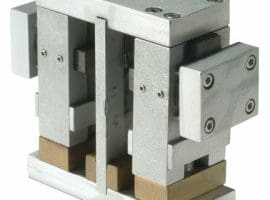It wasn’t easy to come up with a proper headline for this story. So many came to mind, like Woe Woe Woe our Boat, Whack-a-Mole Magnet Market, Endangered Magnets, Planes, Trains and Automobiles, and even: Christmas is at risk!
We’ve endured a lot over the past 18 months:
- Tariffs
- COVID (quarantines, lockdowns, labor shortages, etc.)
- Freight disruptions (Ever Given/Evergreen, please say no more)
- Ongoing driver and chassis shortages contributing to container shortages
- The aftermath of the power outage in TX
- Raw materials shortages
- Ransomware attacks
- Raw materials price increases
- Bidding wars on critical components of magnet manufacturing
- General labor shortages in-house and throughout the supply chain
How we’re handling it:
We’ve worked hard to mitigate the effects and minimize the passing along of additional costs and paid freight premiums to offset increasing lead times. We’ve worked overtime, negotiated with suppliers, asked everyone to fall in line so we might please regain the stability we rely on to best serve our customers. However, shortages of chemicals, shipping containers, lumber for pallets and crates, and other consumables contribute to the current chaos in the supply chain. All indications suggest that the container shortage will last into 2022. We appreciate that we are not alone facing these challenges, and many of you have shared similar experiences.
To share a few specific instances:
- One of our containers unloaded in California on April 22nd and finally made it to Chicago on May 28th. As of this writing (July 7th), it is still sitting in a staging yard in Chicago waiting for a chassis to transport it to our warehouse in Elmhurst. It’s less than 30 miles away and yet so far out of reach.
- Another container of goods that we were lucky enough to receive on time arrived this week. However, the freight charges totaled four times that of our previous delivery of the same product from the same origin.
- One of our factories is struggling to acquire the iron oxide we use in ceramic magnets because the price of iron ore is so high that steel companies are recycling it rather than selling it to magnet factories. And when we can buy it, we often have to bid against other factories and pay cash upfront. It’s unprecedented! And it’s significantly driving up the cost of our products even before final shipping.
- Currently, the cost of Strontium Carbonate is five times higher than it was last year.
So, while we all try to remember that this too shall pass, we thought we’d share some of the details contributing to the current market challenges and let you know that we’ll further embrace the chaos because the alternative is not an option.
Tags: Industrial Magnet, magnet supply chain




